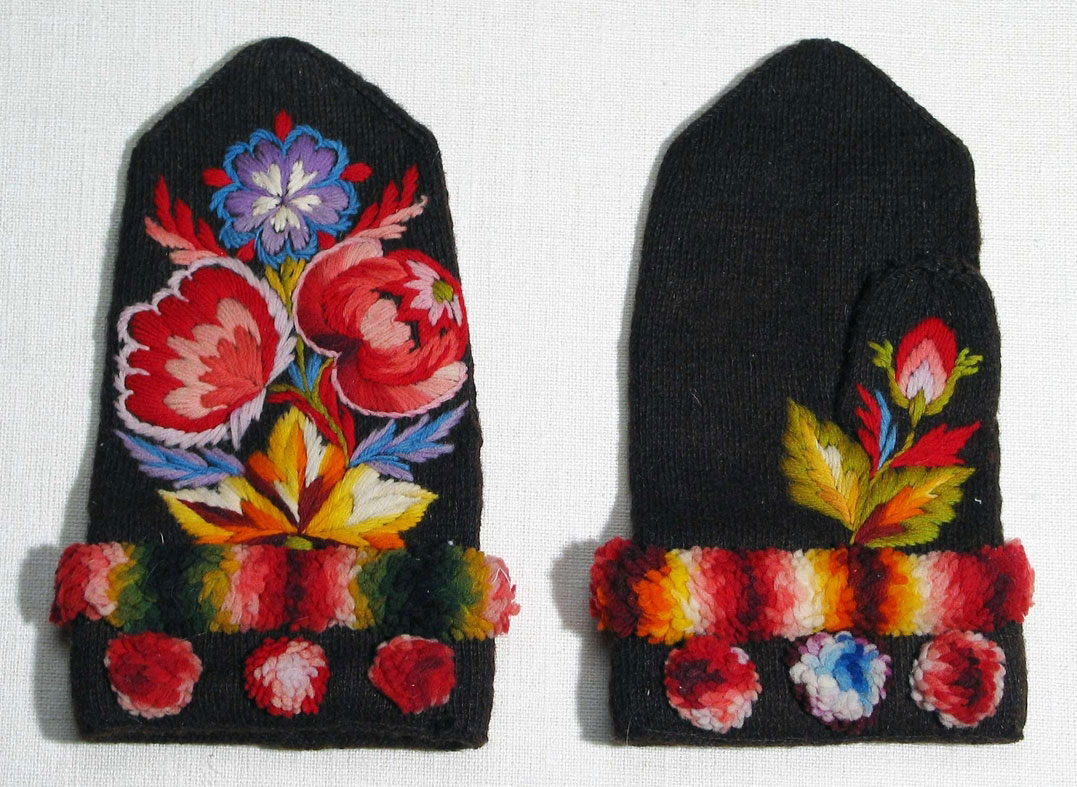- Startpage
- In English
- The Inventory
- Twined knitting
Twined knitting
Twined knitting (tvåändsstickning) is a technique dating back to the 16th century. Two strands of yarn are used, alternating the strands for each loop.
Location: Nation wide
The method produces a garment that is durable and warm. While visually similar to regular knitting, the fabric has a much thicker structure. Using two strands of yarn also allows for unique textural patterns such as “mönsterkrus”. Circular knitting has traditionally been used for the twined knitting technique. Socks, mittens, and hats are some of the garments that are made using twined knitting.
An archaeological find of a mitten in Falun has been dated to around 1550. An 18th-century mitten has also been found in Falun. These finds led to a renewed interest in twined knitting. During the 1980s, many people knew the basic twined knitting technique, but fewer people could produce complicated garments using finer yarn and the technique of making textural patterns. Twined knitting has survived in the woodland regions of Sweden such as Värmland, Dalarna, and Jämtland. In these parts of the country, there was a need for warm and durable clothing. The technique has also been maintained in parts of Norway.
Knowledge about twined knitting has normally been passed on within the family. However, the 20th-century introduction of educational sloyd in schools taught the most common technique today, using one strand of yarn. Twined knitting has also continued to be practiced within the family. Today, there is growing interest in twined knitting, which is taught in person through courses and online through social media. Online communities such as Ravelry provide easily available instructions.


